
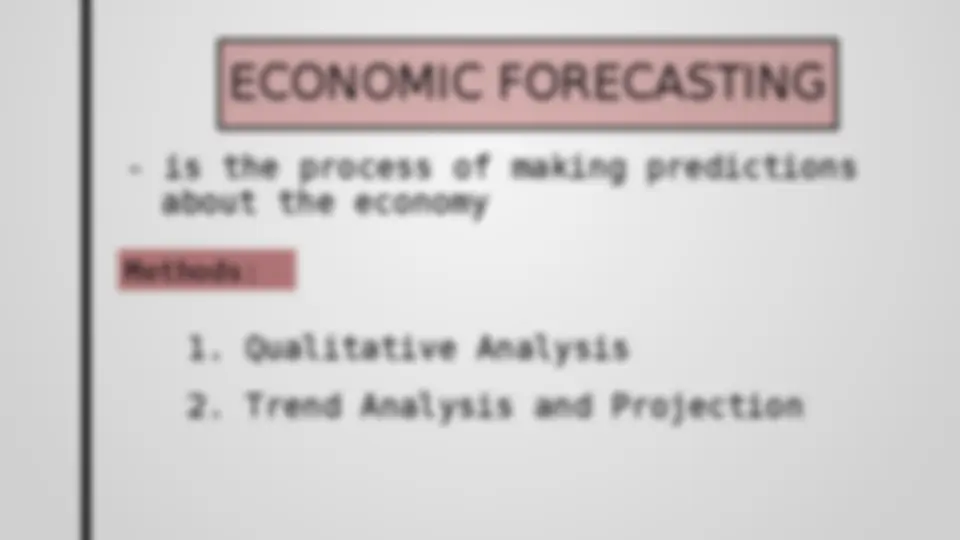
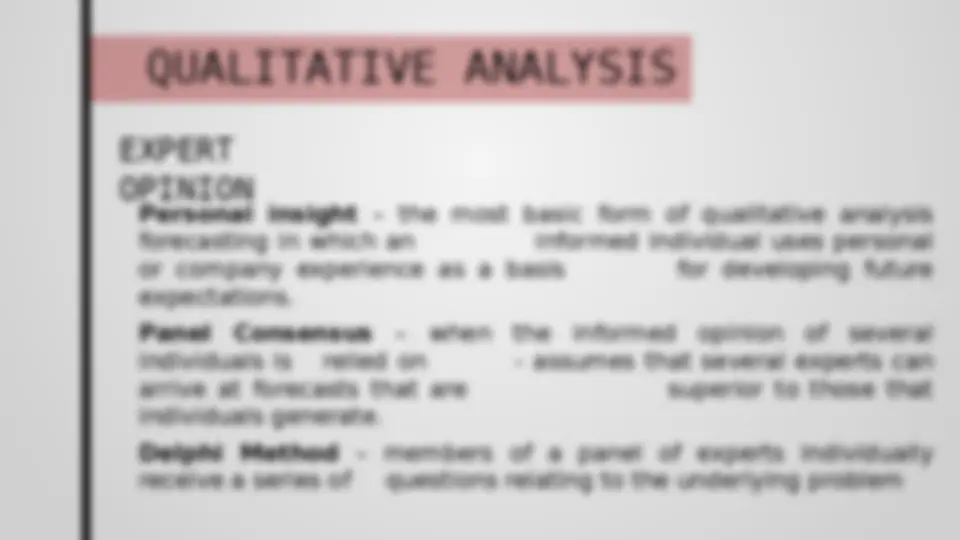
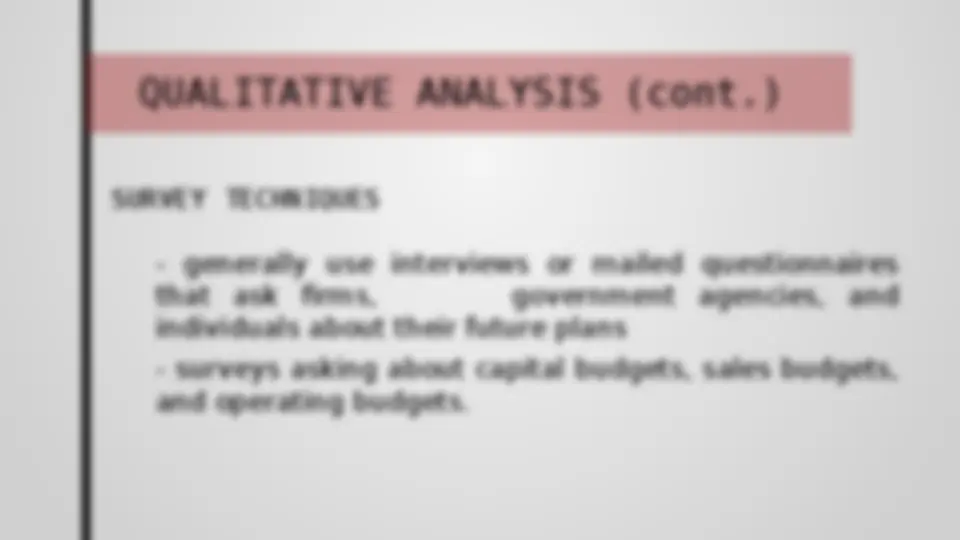
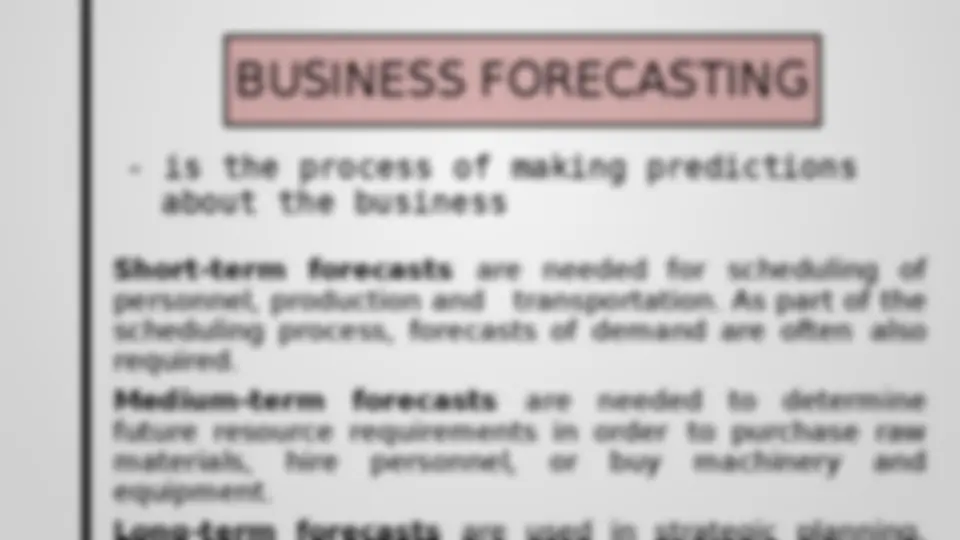
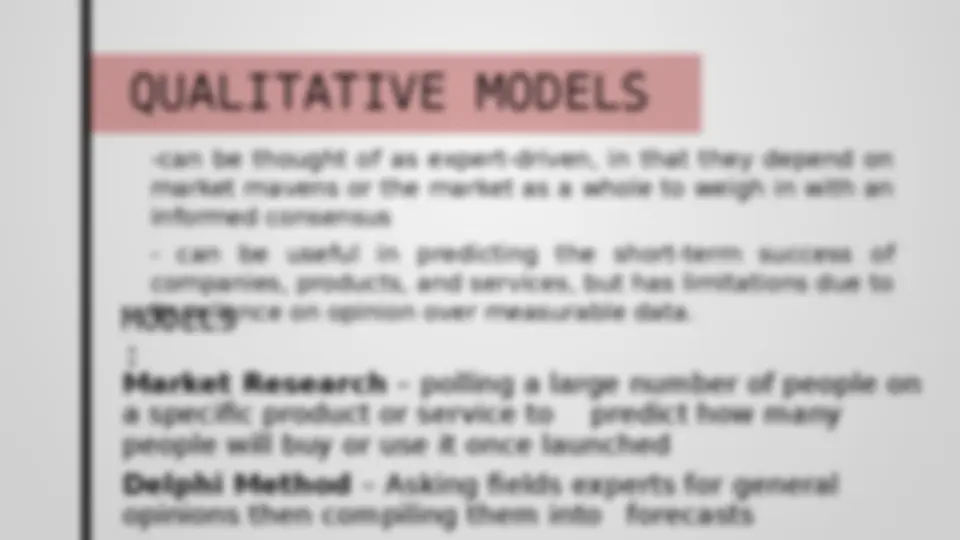
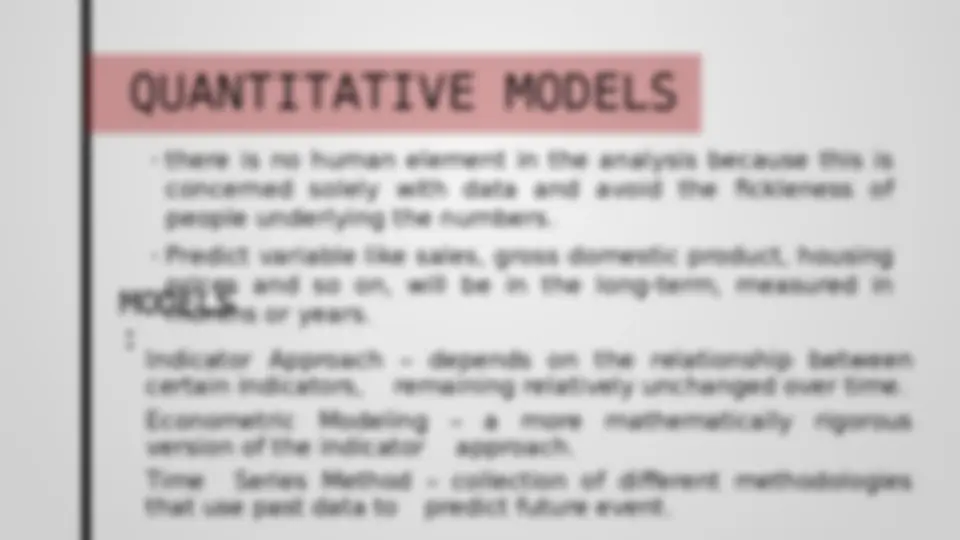


Study with the several resources on Docsity

Earn points by helping other students or get them with a premium plan


Prepare for your exams
Study with the several resources on Docsity

Earn points to download
Earn points by helping other students or get them with a premium plan
Community
Ask the community for help and clear up your study doubts
Discover the best universities in your country according to Docsity users
Free resources
Download our free guides on studying techniques, anxiety management strategies, and thesis advice from Docsity tutors
An overview of business and economic forecasting, focusing on qualitative and quantitative analysis methods. Qualitative analysis includes personal insight, panel consensus, and Delphi Method, while quantitative analysis uses trend analysis and projection, indicator approach, econometric modeling, and time series method. Forecasting is essential for short-term, medium-term, and long-term business planning and strategic decision-making.
Typology: Lecture notes
1 / 10

This page cannot be seen from the preview
Don't miss anything!







FORECASTIN G
QUALITATIVE ANALYSIS Personal insight – the most basic form of qualitative analysis forecasting in which an informed individual uses personal or company experience as a basis for developing future expectations. Panel Consensus – when the informed opinion of several individuals is relied on - assumes that several experts can arrive at forecasts that are superior to those that individuals generate. Delphi Method – members of a panel of experts individually receive a series of questions relating to the underlying problem EXPERT OPINION
SURVEY TECHNIQUES
Circular trend - the long run pattern of increase or decrease in a series of economic data Cyclical fluctuation – describes the rhythmic variation in economic series tat is due to a pattern of expansion or contraction in the overall economy Seasonal variation/ Seasonality - is a rhythmic annual pattern in sales or profits caused by the weather, habit, or social custom, TREND ANALYSIS AND PROJECTION (cont.) TRENDS IN ECONOMIC DATA
BUSINESS FORECASTING Short-term forecasts are needed for scheduling of personnel, production and transportation. As part of the scheduling process, forecasts of demand are often also required. Medium-term forecasts are needed to determine future resource requirements in order to purchase raw materials, hire personnel, or buy machinery and equipment.
Indicator Approach – depends on the relationship between certain indicators, remaining relatively unchanged over time. Econometric Modeling – a more mathematically rigorous version of the indicator approach. Time Series Method – collection of different methodologies that use past data to predict future event. QUANTITATIVE MODELS